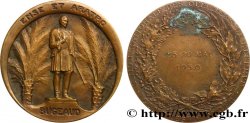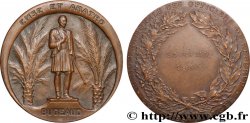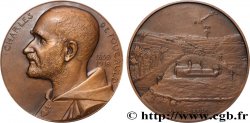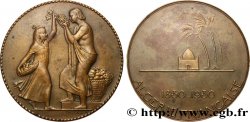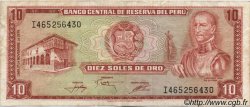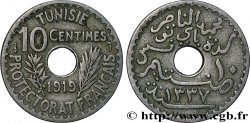E-auction 537-458906 - fme_445325 - ALGERIA - THIRD REPUBLIC Médaille d’enseignement primaire
You must signin and be an approved bidder to bid, LOGIN TO BID. Accounts are subject to approval and the approval process takes place within 48 hours. Do not wait until the day a sale closes to register. Clicking on « bid » constitutes acceptance of the terms of use of cgb.fr private e-auctions.
Bids must be placed in whole Euro amounts only. The sale will start closing at the time stated on the item description; any bids received at the site after the closing time will not be executed. Transmission times may vary and bids could be rejected if you wait until the last second. For further information ckeck the E-auctions F.A.Q.
NO BUYER'S FEE.
NO BUYER'S FEE.
| Estimate : | 160 € |
| Price : | 67 € |
| Maximum bid : | 80 € |
| End of the sale : | 31 July 2023 18:41:00 |
| bidders : | 9 bidders |
Type : Médaille d’enseignement primaire
Date: 1890
Mint name / Town : Algérie, Sidi Bel Abbès
Metal : silver
Diameter : 51,8 mm
Orientation dies : 12 h.
Engraver FAROCHON Jean-Baptiste Eugène (1812-1871)
Weight : 65,1 g.
Edge : lisse + corne ARGENT
Puncheon : corne ARGENT
Coments on the condition:
Très bel exemplaire avec une agréable patine grise irisée. Traces de nettoyage, notamment dans les champs du revers. Présence de quelques coups et rayures, notamment sur la tranche
Obverse
Obverse legend : RÉPUBLIQUE - FRANÇAIS // ENSEIGT PRIMAIRE.
Obverse description : Allégorie couronnant un instituteur et une institutrice, chacun s’occupant de 4 enfants devant une livre ou un globe terrestre.
Reverse
Reverse legend : MR FIOLE INSTR PRE / A / SIDI-BEL-ABBES / (ORAN) / 1889-90.
Reverse description : Légende entre deux palmes.
Commentary
Jean-Baptiste Eugène Farochon, né à Paris le 10 mars 1812 et mort dans la même ville le 1er juillet 1871, est un sculpteur et médailleur français. Il est l'élève de David d'Angers à l’École des beaux-arts de Paris en 1829. Lauréat du prix de Rome de gravure en médaille et pierre fine en 1835, il devient pensionnaire de la villa Médicis de 1836 à 1839. Il expose au Salon de 1833 à 1866. Il est professeur de gravure en médaille et pierre fine à l’École des beaux-arts de Paris en 1863. Son buste, par Gabriel Faraill, l'un de ses élèves, est conservé dans la salle Victor Schœlcher de cette école.
La période dite de l’Algérie française (au sens historique du terme), ou de l’Algérie coloniale, va, dans l'histoire de l'Algérie, de 1830 avec la prise d'Alger, à 1962 avec l'indépendance du pays. Cette période est parfois aussi désignée, dans son ensemble, comme celle de la colonisation, de l’occupation ou de la présence française. En 1839, les autorités françaises adoptent le nom d’Algérie comme appellation officielle du territoire correspondant. L'entreprise de conquête se termine par l'annexion d'une partie du Sahara en 1902, tandis que la colonisation proprement dite voit la création des départements français d'Algérie (1848-1957) — Oran, Alger et Constantine — et des territoires du Sud (1902-1957). La résistance à la colonisation fait place après la Première Guerre mondiale à la constitution du mouvement national algérien. Enfin, après la guerre d'Algérie (1954-1962), l'indépendance du pays est proclamée le 5 juillet 1962.
Jean-Baptiste Eugène Farochon, born in Paris on March 10, 1812 and died in the same city on July 1, 1871, was a French sculptor and medalist.. He was a student of David d'Angers at the École des Beaux-Arts in Paris in 1829.. Winner of the Prix de Rome for medal and fine stone engraving in 1835, he became a resident of the Villa Medici from 1836 to 1839. He exhibited at the Salon from 1833 to 1866. He was a professor of medal and fine stone engraving at the École des Beaux-Arts in Paris in 1863.. His bust, by Gabriel Faraill, one of his students, is kept in the Victor Schœlcher room of this school.
The period known as French Algeria (in the historical sense of the term), or colonial Algeria, runs, in the history of Algeria, from 1830 with the capture of Algiers, to 1962 with the independence of the country.. This period is sometimes also referred to, as a whole, as that of colonization, occupation or French presence.. In 1839, the French authorities adopted the name Algeria as the official name of the corresponding territory.. The conquest ended with the annexation of part of the Sahara in 1902, while colonization itself saw the creation of the French departments of Algeria (1848-1957) — Oran, Algiers and Constantine — and the southern territories (1902-1957).. After the First World War, resistance to colonization gave way to the formation of the Algerian national movement.. Finally, after the Algerian War (1954-1962), the country's independence was proclaimed on July 5, 1962.
La période dite de l’Algérie française (au sens historique du terme), ou de l’Algérie coloniale, va, dans l'histoire de l'Algérie, de 1830 avec la prise d'Alger, à 1962 avec l'indépendance du pays. Cette période est parfois aussi désignée, dans son ensemble, comme celle de la colonisation, de l’occupation ou de la présence française. En 1839, les autorités françaises adoptent le nom d’Algérie comme appellation officielle du territoire correspondant. L'entreprise de conquête se termine par l'annexion d'une partie du Sahara en 1902, tandis que la colonisation proprement dite voit la création des départements français d'Algérie (1848-1957) — Oran, Alger et Constantine — et des territoires du Sud (1902-1957). La résistance à la colonisation fait place après la Première Guerre mondiale à la constitution du mouvement national algérien. Enfin, après la guerre d'Algérie (1954-1962), l'indépendance du pays est proclamée le 5 juillet 1962.
Jean-Baptiste Eugène Farochon, born in Paris on March 10, 1812 and died in the same city on July 1, 1871, was a French sculptor and medalist.. He was a student of David d'Angers at the École des Beaux-Arts in Paris in 1829.. Winner of the Prix de Rome for medal and fine stone engraving in 1835, he became a resident of the Villa Medici from 1836 to 1839. He exhibited at the Salon from 1833 to 1866. He was a professor of medal and fine stone engraving at the École des Beaux-Arts in Paris in 1863.. His bust, by Gabriel Faraill, one of his students, is kept in the Victor Schœlcher room of this school.
The period known as French Algeria (in the historical sense of the term), or colonial Algeria, runs, in the history of Algeria, from 1830 with the capture of Algiers, to 1962 with the independence of the country.. This period is sometimes also referred to, as a whole, as that of colonization, occupation or French presence.. In 1839, the French authorities adopted the name Algeria as the official name of the corresponding territory.. The conquest ended with the annexation of part of the Sahara in 1902, while colonization itself saw the creation of the French departments of Algeria (1848-1957) — Oran, Algiers and Constantine — and the southern territories (1902-1957).. After the First World War, resistance to colonization gave way to the formation of the Algerian national movement.. Finally, after the Algerian War (1954-1962), the country's independence was proclaimed on July 5, 1962.








 Report a mistake
Report a mistake Print the page
Print the page Share my selection
Share my selection Ask a question
Ask a question Consign / sell
Consign / sell
 Full data
Full data
